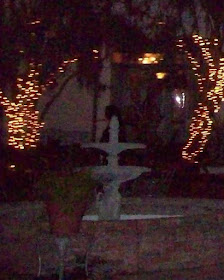The Myrtles Plantation is an antebellum plantation in St. Francisville, Louisiana, near Baton Rouge. Listed on the National Register of Historic Places, the plantation is a bed and breakfast, and it offers historical and mystery tours.
The Myrtles Plantation was built in 1796 by General David Bradford and was called Laurel Grove at the time. General Bradford lived there alone for several years, until being pardoned for his role in the Whiskey Rebellion in 1799 when President Washington order him to be executed. He then moved his wife Elizabeth and their five children to the plantation from Pennsylvania. One of Bradford's law students, Clark Woodruff (or Woodroff) eventually married Bradford's daughter, Sara Mathilda, in 1817. After the death of David Bradford in 1808, Clark and Sara Woodruff managed the plantation for Elizabeth Bradford. They had three children: Cornelia Gale, James, and Mary Octavia.
When Elizabeth Bradford died in 1830, Clark Woodruff and his daughter Mary Octavia moved to Covington, Louisiana, and left a caretaker to manage the plantation. In 1834, Woodruff sold the plantation, the land, and its slaves to Ruffin Gray Stirling. Woodruff eventually died in New Orleans in 1851.
Stirling and his wife, Mary Catherine Cobb, undertook an extensive remodeling of the house. When completed, the new house was nearly double the size of the former building, and its name was changed to The Myrtles. They imported fancy furniture from Europe. The Stirlings had 9 children, but five of them died young. Stirling died in 1854 and left the plantation to his wife.
In 1865, Mary Cobb hired William Drew Winter to help manage the plantation as her lawyer and agent. Winter was married to Mary Cobb's daughter, Sarah Stirling. Sarah and William Winter lived at the Myrtles and had six children, one of whom (Kate Winter) died from typhoid at the age of three. Although the Winters were forced to sell the plantation in 1868, they were able to buy it back two years later.
In 1871, William Winter was shot by a suspected man named E. S. Webber on the porch of the house and within minutes died. Sarah remained at the Myrtles with her mother and siblings until 1878, when she died. Mary Cobb died in 1880, and the plantation passed to Stephen, one of her sons. The plantation was heavily in debt, however, and Stephen sold it in 1886 to Oran D. Brooks. Brooks sold it in 1889, and the house changed hands several times until 1891, when it was purchased by Harrison Milton Williams.
The Myrtles Plantation was built in 1796 by General David Bradford and was called Laurel Grove at the time. General Bradford lived there alone for several years, until being pardoned for his role in the Whiskey Rebellion in 1799 when President Washington order him to be executed. He then moved his wife Elizabeth and their five children to the plantation from Pennsylvania. One of Bradford's law students, Clark Woodruff (or Woodroff) eventually married Bradford's daughter, Sara Mathilda, in 1817. After the death of David Bradford in 1808, Clark and Sara Woodruff managed the plantation for Elizabeth Bradford. They had three children: Cornelia Gale, James, and Mary Octavia.
When Elizabeth Bradford died in 1830, Clark Woodruff and his daughter Mary Octavia moved to Covington, Louisiana, and left a caretaker to manage the plantation. In 1834, Woodruff sold the plantation, the land, and its slaves to Ruffin Gray Stirling. Woodruff eventually died in New Orleans in 1851.
Stirling and his wife, Mary Catherine Cobb, undertook an extensive remodeling of the house. When completed, the new house was nearly double the size of the former building, and its name was changed to The Myrtles. They imported fancy furniture from Europe. The Stirlings had 9 children, but five of them died young. Stirling died in 1854 and left the plantation to his wife.
In 1865, Mary Cobb hired William Drew Winter to help manage the plantation as her lawyer and agent. Winter was married to Mary Cobb's daughter, Sarah Stirling. Sarah and William Winter lived at the Myrtles and had six children, one of whom (Kate Winter) died from typhoid at the age of three. Although the Winters were forced to sell the plantation in 1868, they were able to buy it back two years later.
In 1871, William Winter was shot by a suspected man named E. S. Webber on the porch of the house and within minutes died. Sarah remained at the Myrtles with her mother and siblings until 1878, when she died. Mary Cobb died in 1880, and the plantation passed to Stephen, one of her sons. The plantation was heavily in debt, however, and Stephen sold it in 1886 to Oran D. Brooks. Brooks sold it in 1889, and the house changed hands several times until 1891, when it was purchased by Harrison Milton Williams.














No comments:
Post a Comment